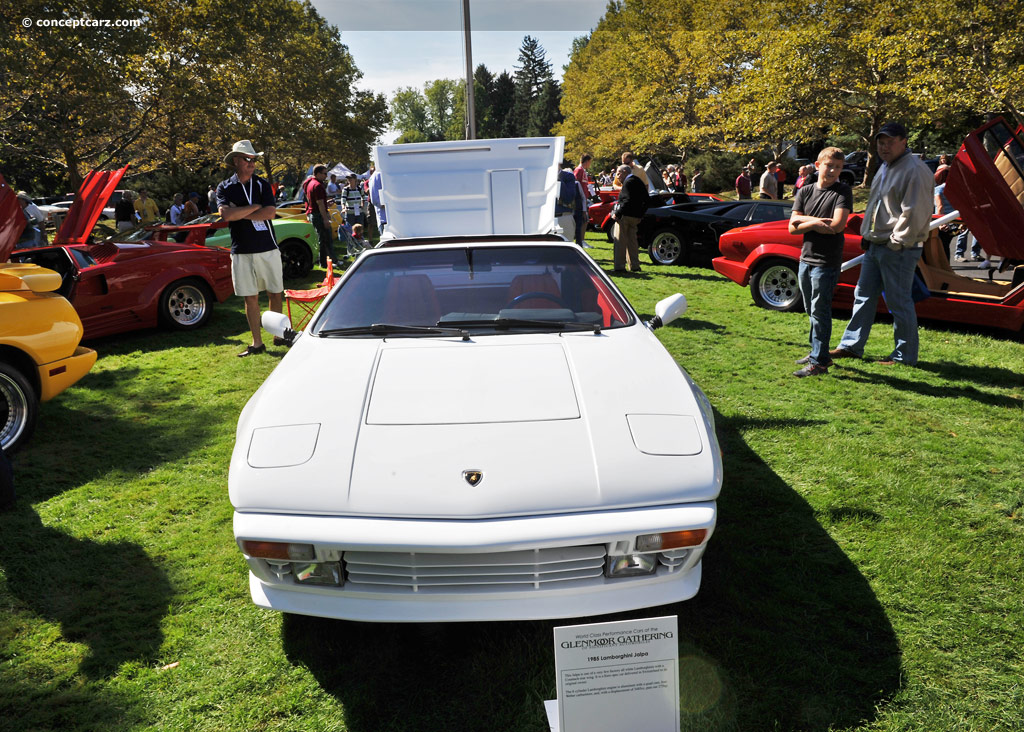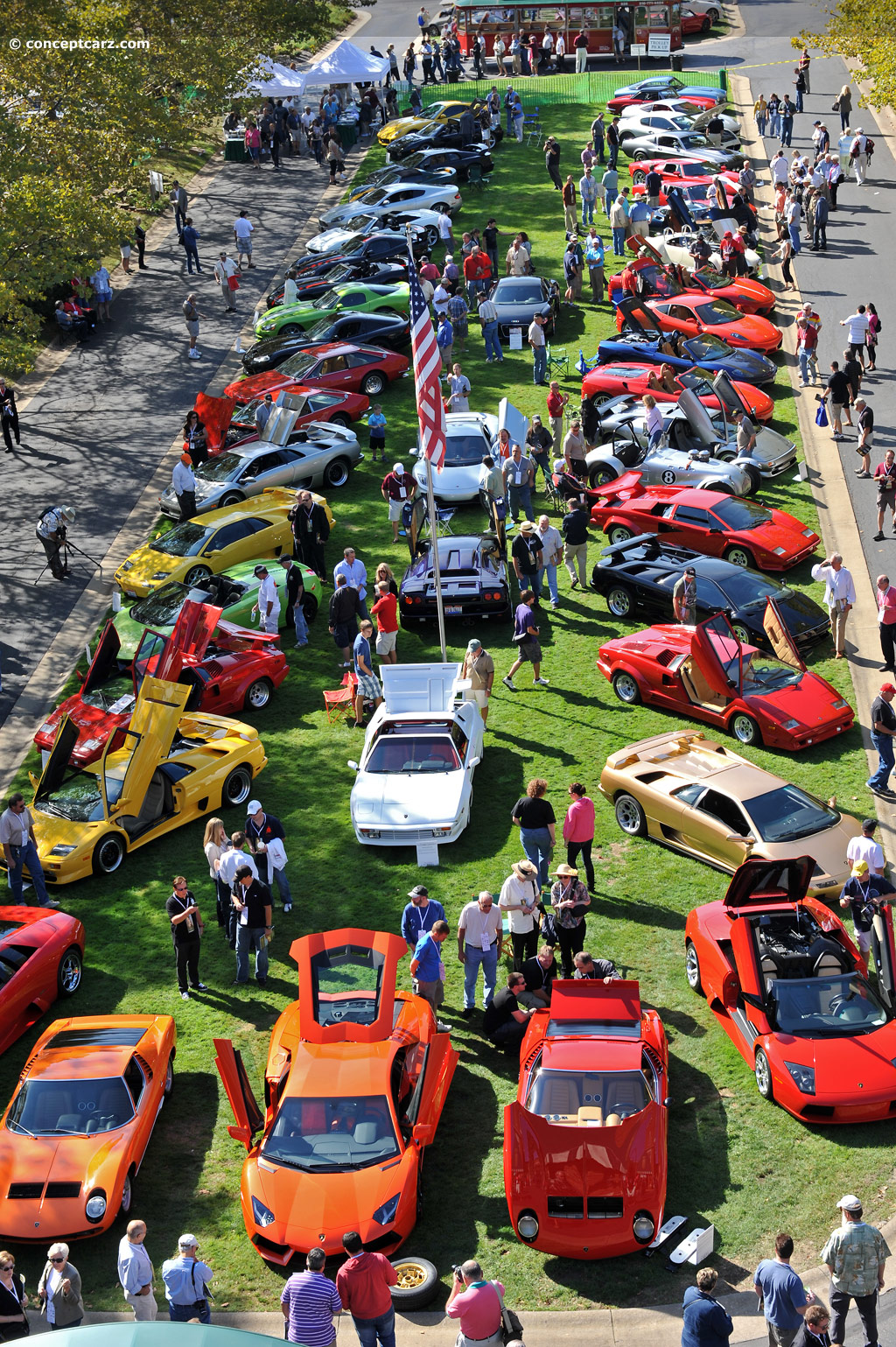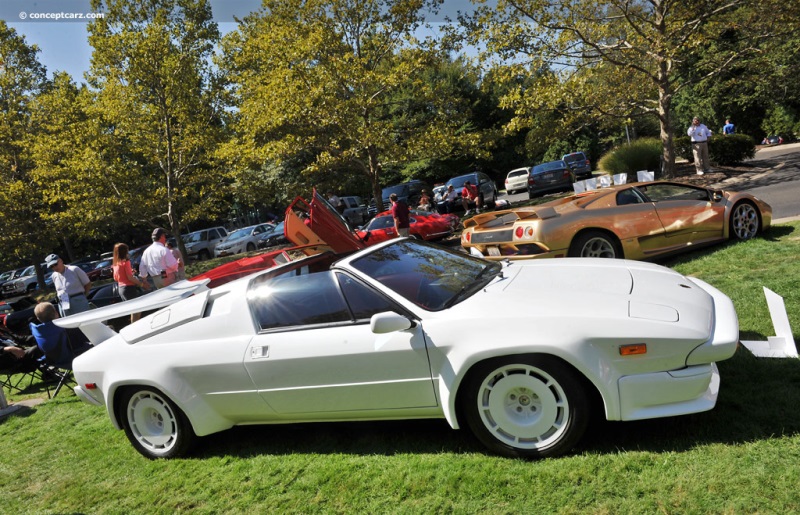Change is inevitable, and change is constant. Embracing changes is a step towards new opportunities and growth. Lamborghini's history is a lesson in change; from front-engined grand tourers to mid-engine supercars. They have explored new avenues but have consistently remained steadfast in their core values of groundbreaking technology and exclusivity.As the 1970s were coming to a close, the muscle car era in the United States was nearing its end, as safety became paramount, insurance premiums rose considerably, and new emission regulations were introduced. This would continue into the 1970s, hastened by the oil crisis of 1973 and an industry-wide endeavor to produce more fuel-efficient vehicles. Supercars were on the chopping block, and the industry suffered as tastes shifted towards smaller and more economical alternatives. Perhaps forecasting this change, Lamborghini introduced a smaller and less expensive model to complement its V12-powered cars in 1970. It was dubbed the Urraco P250 and this four-seater retained the Miura's basic mid-engine layout, but employed a compact 2.5-liter V8 engine instead of a transverse 4.0-liter V12. A two-seater version followed in 1976, the Bertone-styled Silhouette, powered by the Urraco P300's four-cam, 3.0-liter V8. Production of the Silhouette was brief, perhaps due to Lamborghini's famous financial struggles of the era, and just 52 examples were built. The Urraco followed suite a year later, in 1979, ending the concept of a smaller V8-engined Lamborghini.The Lamborghini Jalpa
As a new decade began, Lamborghini soon introduced another 'Junior' model, the Jalpa. As a development of the earlier Uracco and Silhouette, the styling of the Jalpa was conceived and executed by Bertone, receiving somewhat more aggressive lines, mainly in the side treatment of the body. The Targa-style two-seater was powered by a quad-cam V8 engine with its capacity increased to 3.5 litres (3,485cc). Mounted transversely, fuel flow was managed by four twin-barrel down-draught Weber 42 DCNF carburetors, and it was paired with a five-speed synchromesh manual transaxle. It produced 255 horsepower at 7,000 RPM and 225 lb-ft of torque at 4,000 RPM in European specification. The U.S.-destined examples produced 250 bhp. The Lamborghini Jalpa rested on a 96.5-inch wheelbase, had an overall length of 170.5 inches, a width of 74 inches, and stood 44.9 inches tall. It had a fully independent suspension and four-wheel disc brakes. The potent engine paired with aerodynamic coachwork courtesy of Giulio Alfieri, the Jalpa had a top speed of around 155 mph. Zero to sixty mph took 6.0 seconds. Production lasted through 1988, with 410 examples built during that time. During its production lifespan, it received only minor changes. In 1984, several black-painted plastic components were replaced with body-color components. The list included the engine cover, air intakes and bumpers. Additionally, round taillights replaced the previous rectangular-shaped lights. By 1988, under the new ownership of Chrysler, the decision was made to end Jalpa production.
by Daniel Vaughan | May 2024
As a new decade began, Lamborghini soon introduced another 'Junior' model, the Jalpa. As a development of the earlier Uracco and Silhouette, the styling of the Jalpa was conceived and executed by Bertone, receiving somewhat more aggressive lines, mainly in the side treatment of the body. The Targa-style two-seater was powered by a quad-cam V8 engine with its capacity increased to 3.5 litres (3,485cc). Mounted transversely, fuel flow was managed by four twin-barrel down-draught Weber 42 DCNF carburetors, and it was paired with a five-speed synchromesh manual transaxle. It produced 255 horsepower at 7,000 RPM and 225 lb-ft of torque at 4,000 RPM in European specification. The U.S.-destined examples produced 250 bhp. The Lamborghini Jalpa rested on a 96.5-inch wheelbase, had an overall length of 170.5 inches, a width of 74 inches, and stood 44.9 inches tall. It had a fully independent suspension and four-wheel disc brakes. The potent engine paired with aerodynamic coachwork courtesy of Giulio Alfieri, the Jalpa had a top speed of around 155 mph. Zero to sixty mph took 6.0 seconds. Production lasted through 1988, with 410 examples built during that time. During its production lifespan, it received only minor changes. In 1984, several black-painted plastic components were replaced with body-color components. The list included the engine cover, air intakes and bumpers. Additionally, round taillights replaced the previous rectangular-shaped lights. By 1988, under the new ownership of Chrysler, the decision was made to end Jalpa production.
by Daniel Vaughan | May 2024
Related Reading : Lamborghini Jalpa History
At the 1981 Geneva Auto Show the Lamborghini Silhouette replacement, the Lamborghini Jalpa, was debuted. They styling was the work of Bertone which had used the styling-cues from the Silhouette. The result was a super car that was not as angular as its predecessor but with a more modern appeal. Like many other Lamborghinis, the name Jalpa was borrowed from a breed of fighting bulls. An eight-cylinder....
Continue Reading >>
Continue Reading >>
Related Reading : Lamborghini Jalpa History
The Lamborghini Jalpa was the spiritual predecessor of the newer Lamborghini Gallardo. Both cars offered mammoth performance levels compared to their contemporary competitors, yet both were overshadowed by their larger, more potent, and wholly uncompromising siblings. In the Jalpas case, that big brother was the Countach. Stunningly styled by the radical Marcello Gandini, the Countachs fantastic....
Continue Reading >>
Continue Reading >>
1985 Lamborghini Jalpa P350 GTS Vehicle Profiles
Recent Vehicle Additions
Performance and Specification Comparison
Price Comparison
Jalpa Specification Comparison by Year
Year
Production
Wheelbase
Engine
Prices
Related Automotive News

Lamborghini 50Th Anniversary Grand Tour Starts: 350 Supercars From All Over The World Celebrating ‘Made In Italy'
MilanSantAgata Bolognese, 7th May 2013 - Setting off from Piazza Castello in Milan starting at 10 a.m. tomorrow, 8th May, the Lamborghini 50th Anniversary Grand Tour is the largest gathering ever of cars from the House of the Raging Bull,...

Countach and LM 002: the Lamborghini V12 shows to be multi-purpose
In the year of celebrations for the V12, the story of two models that are diametrically opposed but share the same extraordinary 12-cylinder mechanics
This year, Lamborghini is celebrating its V12, the legendary 12-cylinder engine that for nearly...

The legacy of the Lamborghini Countach in a video series. From the idea car, the LP 500 of 1971, to five generations spanning seventeen years
In its celebration of the 50th anniversary of the Countach, Automobili Lamborghini is launching a series of four videos on its social media channels. Every Monday they will recount the legacy of an automotive icon in an unprecedented manner, by involving...

Lamborghini Celebrates The 50Th Anniversary Of The Jarama GT
This year marks the 50th Anniversary of the Lamborghini Jarama GT, presented for the first time at the Geneva Motor Show in March 1970.
The Jarama, whose name derives from an area north of Madrid famous for breeding fighting bulls, was the latest evolution...

The Best Of Lamborghini At London Concours 2020
The London Concours has announced its Great Marques Lamborghini display, celebrating the very best from SantAgata
Line-up includes icons early pioneers like the 400GT and iconic Miura, through to the Diablo SV, Murcielago and Aventador SVJ
Les...

Maserati Tipo 60, Debut And Victory At Rouen On 12 July 1959
Modena, 12 July 2019 – On 12 July 1959, the Maserati Tipo 60 Birdcage, with the 30 year old Stirling Moss at the wheel, made its race debut in the Sport category at Rouen. The Tipo 60 recorded its first win, defeating two Lotus 15 cars and getting...



































